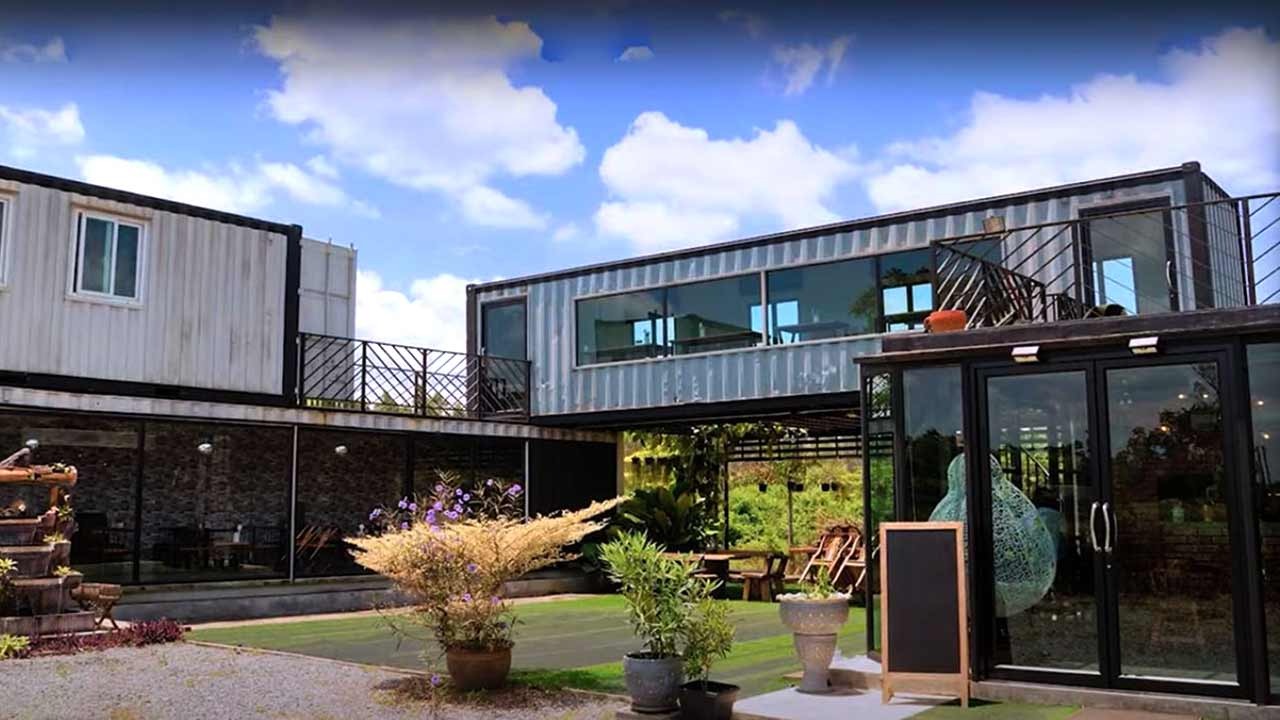Imagine owning a home for less than the cost of a new sedan. Thanks to innovative designs and affordability, shipping container homes are making this dream a reality for many. These sustainable and customizable dwellings offer a unique blend of practicality and style, redefining modern living.
The Rise of Shipping Container Homes
Shipping container homes have evolved from a niche concept to a popular housing solution. Initially, the idea stemmed from the need for affordable and quick-to-construct housing solutions. Over the years, as people gravitated towards minimalistic and eco-friendly living spaces, these homes gained traction. The movement towards sustainability and the efficient use of resources has further fueled their popularity, allowing individuals to explore modern, affordable housing options.
The advantages of shipping container homes are numerous. They offer a level of affordability that traditional homes can’t match, primarily because they utilize recycled materials and require less labor to construct. The versatility of these structures is another key benefit; they can be adapted to various needs, from simple living spaces to elaborate residences. Compared to traditional housing, which often involves long construction times and higher costs, container homes provide a faster and more economical alternative.
Moreover, the rise of the tiny house movement has significantly influenced the popularity of container homes. This movement champions the idea of living simply and sustainably, encouraging people to downsize and reduce their environmental footprint. Shipping container homes fit seamlessly into this cultural shift, offering compact, efficient living spaces that make optimal use of resources.
Cost-Effectiveness
When you compare the costs of shipping container homes to popular sedan models, the savings become apparent. For instance, a new sedan might cost anywhere from $20,000 to $40,000, depending on the make and model. In contrast, a basic container home can be built for a fraction of that price, with affordable options starting around $10,000. This cost-efficiency makes container homes an attractive option for budget-conscious buyers looking for a permanent residence.
While initial construction costs are relatively low, it’s important to consider long-term expenses such as maintenance and potential hidden costs. Container homes require proper insulation and ventilation to ensure comfort, which might add to the initial budget. However, the overall long-term savings can be significant due to reduced utility bills and minimal maintenance compared to traditional homes.
For those interested in purchasing or building a container home, several financing options are available. These include personal loans, mortgages specifically tailored for non-traditional housing, and even government incentives for sustainable living. These resources make container homes accessible to a broader audience, allowing more people to embrace this innovative housing solution.
Design and Customization
The design possibilities for shipping container homes are incredibly diverse. From simple, minimalist structures to elaborate, fully-equipped residences, the range of options is vast. As highlighted by various top designs, homeowners can opt for single-container units or combine multiple containers to create larger, more complex living spaces. This flexibility allows for creative architectural solutions that can cater to different tastes and preferences.
Customization is another significant advantage of container homes. Owners can tailor their homes to fit personal needs, modifying interior layouts and choosing from a variety of exterior finishes. This personalization extends to the integration of eco-friendly technologies, such as solar panels and rainwater harvesting systems, which not only enhance the home’s functionality but also contribute to sustainability efforts.
Numerous unique container home designs around the world showcase the versatility of these structures. From urban settings to remote landscapes, these homes adapt to their surroundings, providing comfortable and stylish living spaces that challenge conventional housing norms.
Environmental Impact
Shipping container homes offer substantial environmental benefits. By repurposing used shipping containers as building materials, these homes reduce waste and resource consumption. This practice aligns with broader sustainability goals, as it extends the lifecycle of materials that would otherwise contribute to landfill waste. Additionally, the compact nature of these homes encourages efficient land use, further minimizing their ecological footprint.
Energy efficiency is another key aspect of container homes. Many are designed with features that enhance insulation and incorporate renewable energy sources, such as solar panels. This efficient design reduces energy consumption and lowers utility costs, making container homes an environmentally friendly alternative to traditional housing.
Overall, living in a shipping container home can significantly reduce one’s carbon footprint compared to standard housing options. The combination of recycled materials, energy-efficient designs, and sustainable living practices positions container homes as a viable solution for those looking to minimize their impact on the planet.
Challenges and Considerations
Despite their many advantages, prospective container home owners must navigate certain challenges. Zoning and legal issues can arise, as some areas have strict regulations regarding non-traditional housing. It’s essential to research local zoning laws and obtain the necessary permits before embarking on a container home project. Consulting with professionals familiar with these regulations can help streamline the process and avoid potential legal hurdles.
The durability and weather resistance of shipping container homes are also important considerations. While these structures are inherently strong, modifications may be necessary to ensure they can withstand various climate conditions. Proper insulation, moisture control, and rust prevention measures are crucial for maintaining the home’s integrity over time.
Market perceptions and resale value may also influence a buyer’s decision. While container homes are gaining popularity, they are still considered unconventional by some. This perception could impact their resale value, though growing interest in sustainable living and unique housing solutions may balance this concern. As the market for container homes continues to evolve, their acceptance and value are likely to increase.

Alexander Clark is a financial writer with a knack for breaking down complex market trends and economic shifts. As a contributor to The Daily Overview, he offers readers clear, insightful analysis on everything from market movements to personal finance strategies. With a keen eye for detail and a passion for keeping up with the fast-paced world of finance, Alexander strives to make financial news accessible and engaging for everyone.


